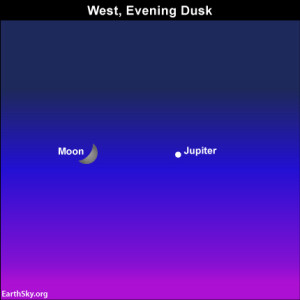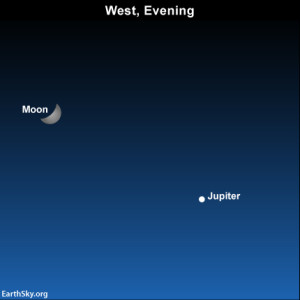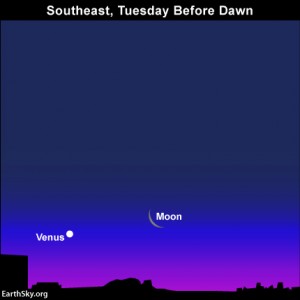May 2014 guide to the five visible planets
- May 7, 2014
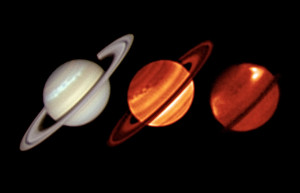 May 2014 is Saturn’s month. We pass between Saturn and the sun on May 10, bringing the planet closest for this year. May is great for other planets, too! Charts, pics, info here.
May 2014 is Saturn’s month. We pass between Saturn and the sun on May 10, bringing the planet closest for this year. May is great for other planets, too! Charts, pics, info here.
Jupiter and Mars both pop into view as soon as darkness falls on these May 2014 evenings. Both are very, very bright. It’s not likely that you’ll mistake one planet for the other. They are in different parts of the sky, and exhibit different colors. Jupiter appears cream-colored and Mars reddish. At early evening, golden Saturn rises over southeast horizon, and though not as bright as Jupiter or Mars, its brilliance is on par with the sky’s brightest stars. And, by rights, this is Saturn’s month. The ringed planet is closest to us in May 2014 for this year.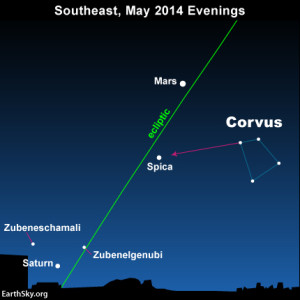
Saturn is the planet to watch in May 2014. As seen from the whole Earth, Saturn sits low in southeast at nightfall and early evening. Earth in its smaller, faster orbit passes between the sun and Saturn on May 10, bringing the planet opposite the sun in our sky (opposition). In 2014, Saturn shines in front of the constellation Libra, making a triangle with the constellation’s two brightest stars, Zubenelgenubi and Zubeneschamali. Look for the almost full moon to couple up with Saturn on the night of May 13!
Mercury will present its best evening apparition of the year for the Northern Hemisphere in May 2014. This month, you almost certainly need to be in the Northern Hemisphere or southern tropics for any chance of seeing Mercury, which is the innermost planet of the solar system and which, therefore, stays near the sun in our sky. Northerly latitudes will see Mercury starting the second week of May. Mercury will reach its greatest eastern elongation – greatest angular distance from the setting sun on our sky’s dome – on May 25. Look for the slender lunar crescent near Mercury after sunset on May 30.
Venus, the sky’s brightest planet is still prominent in the eastern predawn/dawn sky throughout May. In fact, dazzling Venus will remain the most brilliant star like object in the morning sky until late October 2014, at which time it will shift over into the evening sky. The lovely waning crescent moon swings close to Venus on May 25.


